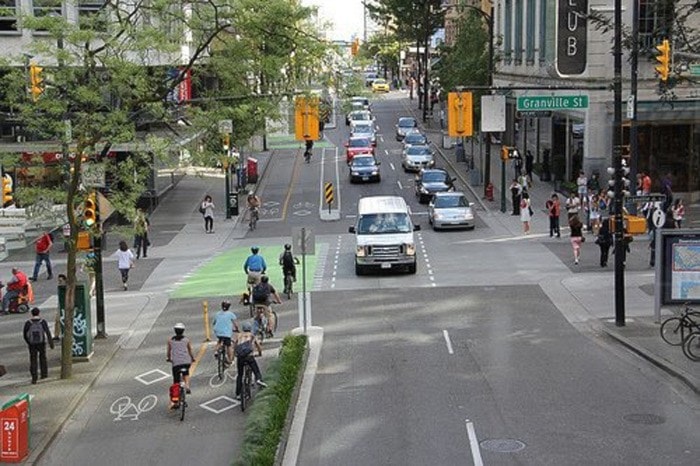"Quality of life should not be a spectator sport." (Bustos)
The need to address health care concerns, obesity, road congestion and greenhouse gas emissions is pushing us to look at changes that need to be made in our current approach to transportation and lifestyle choices.
We have a responsibility to address these concerns now for ourselves, our children and our grandchildren. http://completestreetsforcanada.ca.
A Complete Street is one that is designed for all ages, abilities, and modes of travel. On Complete Streets, safe and comfortable access for pedestrians, bicycles, transit users and the mobility-impaired is not an afterthought or an add-on, but a part of the planning.
A Complete Streets policy ensures that transportation planners and engineers consistently design and operate the entire street network in the community for all road users, not only motorists.
Complete Streets can exist in communities of all shapes and sizes, and if we design our streets with child safety in mind they will be safe and pleasant for all users.
Complete Streets offer a variety of benefits in the community. The link between Complete Streets and public health is already well-documented, and communities across North America already include Complete Streets policies in their list of preventive health strategies.
Complete Streets also promote 'livability.'
Design treatments such as street furniture, trees and wide pedestrian rights-of-way enliven our public areas and encourage people to linger and socialize. There are studies to show that the business community also benefits from increased pedestrian and cycling traffic. Complete streets are safe, sustainable and cost-effective.
A Complete Streets approach means that the term Complete Streets is mentioned in at least one official planning document in the community but that the community has yet to adopt an official Complete Streets policy.
To advocate for Complete Streets means reaching out to elected officials, government staff and the public to bring awareness of the streets which are difficult or unsafe for pedestrians, cyclists or transit users.
Most communities have examples of schools that have no sidewalks out front, bus stops that are not accessible for people using mobility devices and stretches of busy roadway without safe pedestrian crossings.
In Canada, the municipal official community plan is subject to regular public review and this provides an opportunity to challenge elected officials and government staff to recognize the needs of all road users.
Davis, Calif., is a great example of a small city of 65,000 people that has made far-sighted policy and planning decisions that de-emphasize the car and make walking and biking easier and more attractive.
To learn more, visit www.runmuki.com/paul/writing/davis.html.
Margaret Harris, past president of the Comox Valley Cycling Coalition, writes Shifting Gears. It appears every fourth week.
